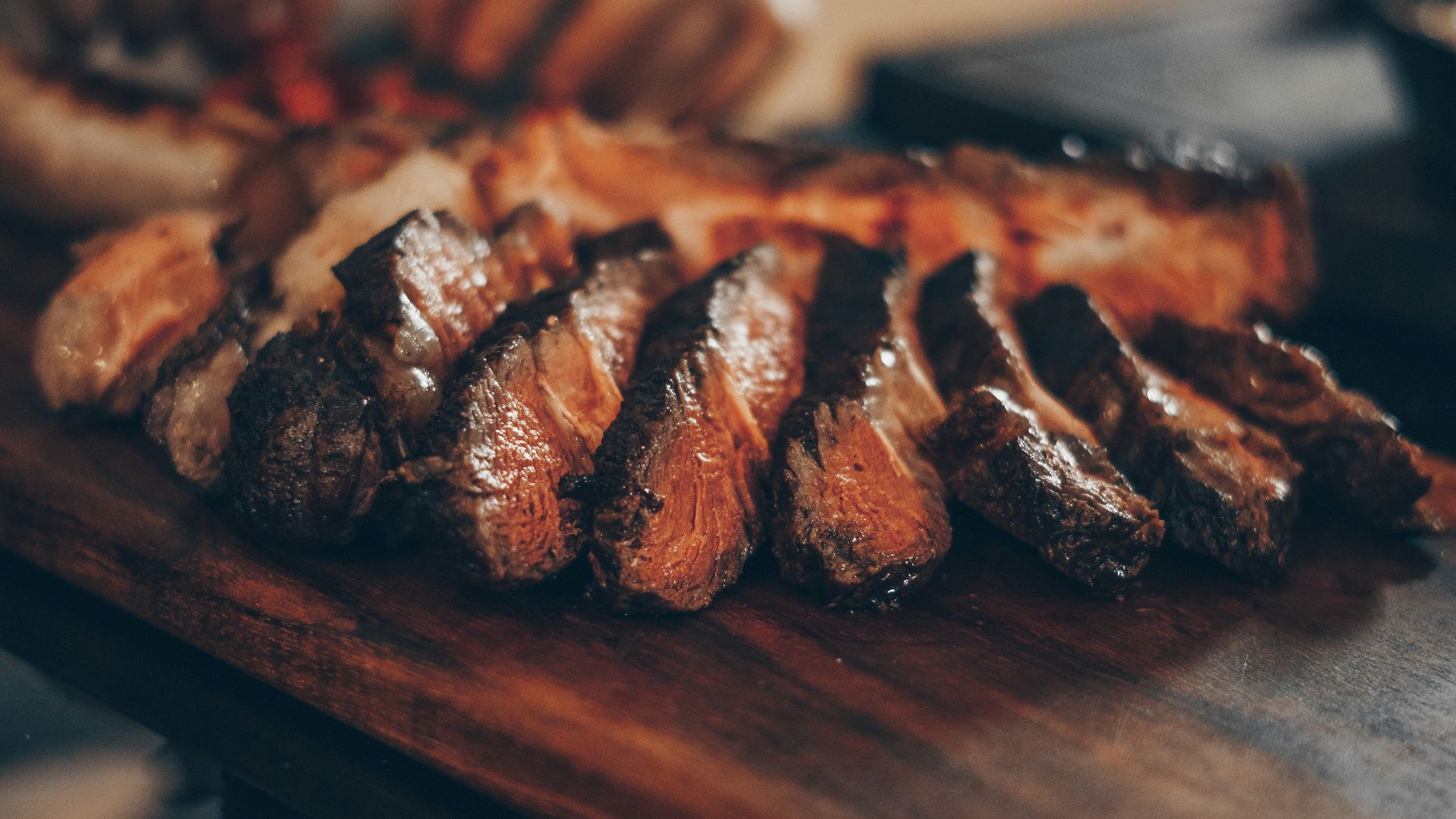
Day in the Life of the #1 BBQ in Kansas City
BBQ pit cooking is a traditional method of slow-cooking meat over a wood or charcoal fire in a dug-out pit or an enclosed space. This technique imparts a rich, smoky flavor that's beloved in many barbecue traditions around the world. Here’s a guide t...
An active subscription is required
Already purchased? Sign In
Subscribe
Bundle Preview
This content is not available in your region
Day in the Life of the #1 BBQ in Kansas City
BBQ pit cooking is a traditional method of slow-cooking meat over a wood or charcoal fire in a dug-out pit or an enclosed space. This technique imparts a rich, smoky flavor that's beloved in many barbecue traditions around the world. Here’s a guide to BBQ pit cooking:
### Essential Elements
1. **The Pit:**
- **Traditional Method:** Dig a hole in the ground, typically about two to three feet deep and wide enough to hold both the fire and the meat you plan to cook. Line the pit with stones to help retain heat.
- **Enclosed Pits:** Alternatively, use a pre-built barbecue pit or a smoker with a firebox that allows for indirect cooking.
2. **Fuel:**
- **Wood:** Use hardwoods like hickory, oak, apple, or mesquite to impart different flavors. Avoid using softwoods like pine, as they produce sooty smoke that can affect the taste.
- **Charcoal:** Lump charcoal is preferable for its pure wood content and lack of additives.
3. **Heat Control:**
- **Temperature:** Aim for low and slow cooking; maintain temperatures between 200°F and 275°F (93°C and 135°C).
- **Ventilation:** Use vents or adjust the pit cover to control airflow and maintain consistent temperatures.
### Cooking Process
1. **Preparation:**
- **Meat Selection:** Choose meats that benefit from slow cooking, such as pork shoulder, brisket, ribs, or whole animals like lamb or goat for a more traditional experience.
- **Seasoning:** Brine or marinate the meat in advance, and apply a dry rub of spices to enhance flavor.
2. **Building the Fire:**
- **Lighting the Fire:** Begin by lighting kindling and gradually adding wood or charcoal. Allow the fire to burn down until you have a deep, even bed of coals.
- **Achieving the Right Heat:** Place hot coals around the edges of the pit to create indirect heat.
3. **Cooking:**
- **Positioning the Meat:** Place the meat on a grate over the pit, or wrap it in leaves (e.g., banana leaves) or foil and place it directly on the coals.
- **Cover the Pit:** Use a metal cover or a layer of earth to trap heat and smoke. This can also be done using a reverse-flow smoker with lids.
- **Cooking Time:** Depending on the size and type of meat, cooking can take anywhere from several hours to a whole day. Continuously monitor the temperature and adjust coals or vents as necessary.
4. **Resting and Serving:**
- **Resting the Meat:** Once the meat is done (typically when it reaches an internal temperature of around 195°F to 205°F for tougher cuts), allow it to rest for 30 minutes to an hour. This helps redistribute the juices.
- **Serving:** Slice or pull the meat and serve with traditional BBQ sides like coleslaw, baked beans, or corn on the cob.
### Safety and Best Practices
- **Fire Safety:** Always have water or a fire extinguisher nearby when working with open flames.
- **Invest in Quality Tools:** Use reliable thermometers to monitor both the air and meat temperatures.
- **Experiment and Adjust:** Feel free to experiment with different wood types, rubs, and sauces to create your signature BBQ flavors.
By following these guidelines, you can enjoy the rich flavors and communal experience that BBQ pit cooking offers. It's as much about technique as it is about tradition and savoring each unique cooking session.
Categories: Food

